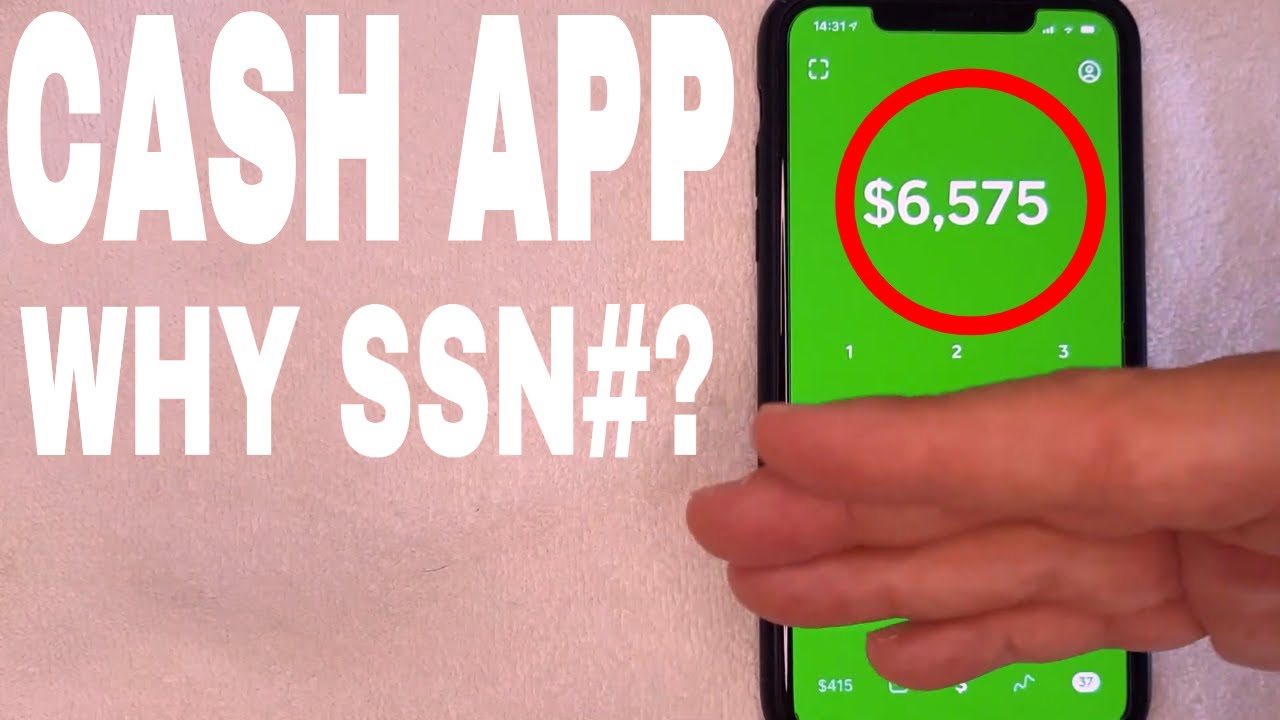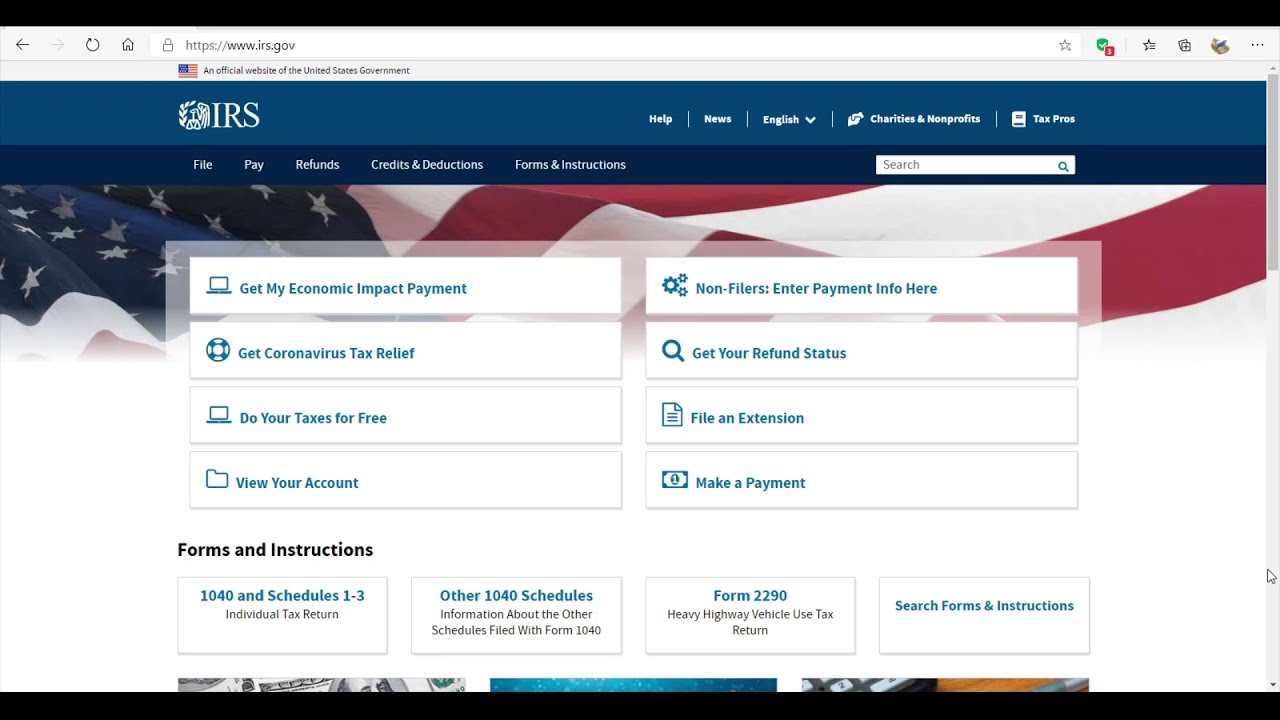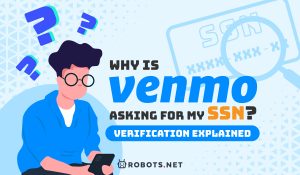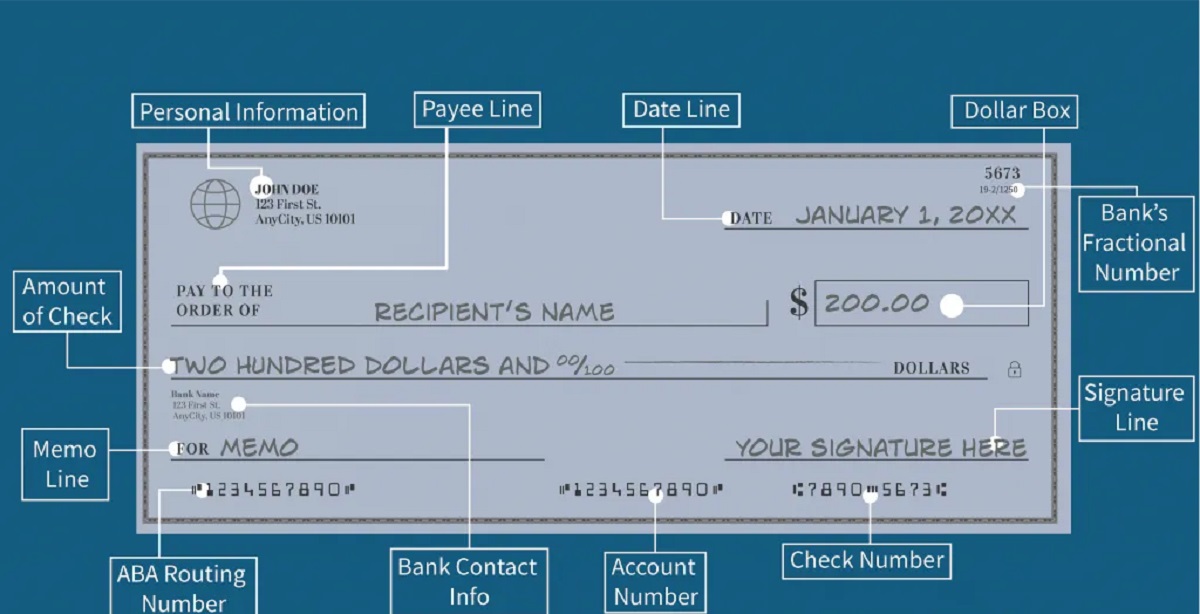Introduction
Welcome to the digital age, where personal information has become a valuable commodity on the internet. The dark web, a hidden part of the internet, is notorious for being a hub of illegal activities. It’s a place where cybercriminals buy and sell stolen data, including sensitive personal information such as Social Security numbers (SSNs).
If you’re concerned about the security of your SSN and suspect it may have been compromised, you’re not alone. Discovering that your SSN is on the dark web can be a distressing experience, but it’s essential to take immediate action to protect yourself from potential identity theft.
In this article, we will explore what the dark web is, how SSNs end up there, the potential dangers of having your SSN exposed, and most importantly, what steps you can take if you find yourself in this unfortunate situation.
It’s important to note that the dark web is just one part of the internet, albeit a hidden one, and not all websites on the dark web are engaged in illegal activities. However, it is crucial to remain vigilant and proactive in safeguarding our personal information in today’s digital landscape.
Understanding the Dark Web
The dark web is a term used to describe the hidden part of the internet that is not indexed by search engines like Google. It operates on an overlay network called Tor (The Onion Router), which allows users to browse websites anonymously. This anonymity has made the dark web a breeding ground for illegal activities, including the buying and selling of stolen personal information.
Unlike the surface web, which is accessible to anyone with an internet connection, the dark web requires specific software, configurations, and knowledge to access. This added layer of complexity makes it attractive to cybercriminals who want to operate under the radar.
The dark web is divided into three layers: the surface web, the deep web, and the dark web. The surface web consists of websites that are easily accessible and indexed by search engines. The deep web refers to websites that are not indexed by search engines but are still accessible if you have the URL or login credentials. Lastly, the dark web comprises websites that require specific software to access and are intentionally hidden.
Nowadays, the dark web has become synonymous with illegal activities, such as drug trafficking, weapons sales, counterfeit documents, and identity theft. It’s a hub for cybercriminals to trade stolen data, including Social Security numbers (SSNs), credit card information, and login credentials.
Understanding the dark web is essential in grasping the potential risks associated with having your SSN on this hidden part of the internet. It’s crucial to take proactive measures to protect your identity and mitigate any potential harm.
What is the Dark Web?
The dark web is a covert part of the internet that is not indexed by search engines. It is a subset of the deep web, which represents websites and content that cannot be accessed through conventional search engines. To access the dark web, users typically utilize anonymity networks such as Tor (The Onion Router) that conceal their identities and online activities.
Unlike the surface web, where websites are easily discoverable, the dark web operates as an encrypted network, masking the true identity and location of its users. This anonymity has attracted various individuals and groups, including cybercriminals and those seeking to engage in illicit activities.
The dark web hosts a wide range of websites, many of which offer goods and services deemed illegal or unethical. These include black markets for drugs, firearms, counterfeit currencies, stolen data, and various forms of illegal pornography. Additionally, there are forums, chat rooms, and social networks where users can communicate anonymously.
It’s important to note that not all activities on the dark web are illegal. Whistleblowers, journalists, and individuals living under oppressive regimes may use the dark web to share sensitive information and protect their identities. Nevertheless, the anonymity provided by the dark web has become synonymous with criminal activities.
Due to its hidden nature, the dark web creates challenges for law enforcement agencies to monitor and apprehend cybercriminals. Efforts are being made to combat illegal activities on the dark web, but it remains an ongoing battle.
As internet users, it’s vital to be aware of the dark web’s existence and the potential dangers it poses. Understanding how the dark web operates and the types of illegal activities that take place can better equip individuals to protect their personal information and stay safe online.
How SSNs end up on the Dark Web?
The dark web serves as a marketplace for cybercriminals to trade and sell stolen personal information, including Social Security numbers (SSNs). There are several ways in which SSNs end up on the dark web, often as a result of data breaches, hacking incidents, or the activities of malicious actors.
One primary method is through data breaches. In recent years, numerous high-profile data breaches have occurred, exposing vast amounts of sensitive information. These breaches have affected organizations across various industries, including retail, healthcare, finance, and government. When a data breach occurs, cybercriminals can gain access to databases containing SSNs and other personal details.
Another method is through phishing attacks. Phishing is a technique used by cybercriminals to trick individuals into revealing their personal information. They may create fake websites or send deceptive emails that appear legitimate, enticing users to enter their SSNs and other sensitive details. Once obtained, these SSNs can be sold on the dark web to criminals who can then use them for fraudulent activities.
Furthermore, there is a thriving underground market for stolen data on the dark web. Cybercriminals who have successfully acquired SSNs through various means can sell them to interested buyers. These buyers may be identity thieves, individuals looking to assume a false identity, or even organized criminal groups seeking to commit financial fraud.
It’s important to note that individuals can also inadvertently contribute to the availability of their SSNs on the dark web. This can occur through weak passwords, lack of two-factor authentication, and falling victim to phishing attempts. By practicing good cybersecurity hygiene, such as using strong passwords, being cautious of suspicious emails or websites, and regularly updating software, individuals can reduce the risk of their SSNs being compromised.
Due to the prevalence of data breaches and other cyber threats, SSNs are a highly sought after commodity on the dark web. It’s crucial for individuals and organizations to take proactive steps to protect their personal information and prevent the unauthorized access and distribution of SSNs.
The dangers of having your SSN on the Dark Web
Discovering that your Social Security number (SSN) is on the dark web can expose you to a range of potential dangers and risks. The unauthorized access and distribution of your SSN can lead to severe financial, legal, and personal consequences. Here are some of the dangers associated with having your SSN on the dark web:
Identity theft: Your SSN is a crucial piece of information used to verify your identity. If it falls into the wrong hands, cybercriminals can use it to open new credit accounts, apply for loans, file fraudulent tax returns, or commit other forms of financial fraud in your name. This can wreak havoc on your credit score, lead to significant financial losses, and result in a long and challenging recovery process.
Financial fraud: With access to your SSN, cybercriminals can potentially gain unauthorized access to your bank accounts, credit cards, and other financial assets. They may use your SSN to make unauthorized transactions, drain your accounts, or engage in fraudulent activities, leaving you with financial losses and a lengthy battle to rectify the situation.
Personal reputation damage: If your SSN is associated with criminal activities on the dark web, it can tarnish your personal reputation and lead to legal complications. Law enforcement agencies may mistakenly believe that you are involved in illegal activities, leading to investigations, arrests, and potential legal consequences.
Medical identity theft: Medical identity theft occurs when someone uses your SSN to access medical services, receive healthcare, or obtain prescription drugs in your name. This can lead to fraudulent medical bills, incorrect medical records, and potential harm to your health if the thief’s medical information gets mixed with yours.
Emotional distress: Discovering that your SSN is on the dark web can be emotionally distressing. It can leave you feeling violated, vulnerable, and anxious about the potential consequences and the long-term impact it can have on your finances and personal life.
Legal complications: Having your SSN associated with illegal activities on the dark web can lead to legal complications. You may need to prove your innocence and clear your name, which can be a lengthy and challenging process. It’s important to take immediate action to mitigate the potential legal consequences of having your SSN exposed on the dark web.
These dangers highlight the importance of actively monitoring and protecting your personal information. By staying vigilant, implementing strong security measures, and taking prompt action if your SSN is compromised, you can minimize the risks and safeguard your financial well-being and personal reputation.
Signs your SSN may be on the Dark Web
Discovering whether your Social Security number (SSN) is on the dark web can be challenging, as this hidden part of the internet operates anonymously. However, there are signs and indicators that can help you determine if your SSN may have been compromised and is circulating on the dark web. Here are some signs to watch out for:
Notification from a data breach: If you receive a notification from a company or organization stating that their database has been breached and your personal information, including your SSN, may have been compromised, it is vital to take immediate action. Data breach notifications are an indicator that your SSN could be circulating on the dark web.
Unauthorized financial activity: If you notice unauthorized transactions, unfamiliar charges, or new accounts that you did not open on your bank statements or credit reports, it could be a sign that your SSN has been compromised. This could indicate that your SSN is being used for fraudulent purposes, potentially on the dark web.
Identity verification issues: If you encounter difficulties when trying to verify your identity with financial institutions, the government, or other agencies, it might suggest that your SSN is being used by someone else. Inaccurate or mismatched information linked to your SSN could indicate its presence on the dark web.
Receiving strange emails or messages: If you start receiving phishing emails or messages that appear suspicious or requesting personal information, it could indicate that your SSN is being targeted. Cybercriminals may be attempting to gather additional information about you to sell on the dark web.
Notifications of fraudulent tax filings: If you receive notices from the Internal Revenue Service (IRS) or other tax authorities informing you that multiple tax returns have been filed in your name, it could be a sign of identity theft. This may indicate that your SSN is being used on the dark web for fraudulent tax purposes.
Monitoring services alerts: If you subscribe to identity theft monitoring services, they may notify you if your SSN appears on suspicious websites or the dark web. These services scan online platforms for signs of your personal information and can provide early warning alerts.
It’s important to stay vigilant and be aware of these signs. If you notice any of these indicators, it’s crucial to take immediate action to protect yourself. Contact relevant authorities, such as your financial institutions and credit reporting agencies, to notify them of the potential SSN compromise and follow their guidance on mitigating the risks associated with having your SSN on the dark web.
Step-by-step guide: What to do if your SSN is on the Dark Web
Discovering that your Social Security number (SSN) is on the dark web can be a distressing experience, but it’s crucial to take immediate action to protect yourself from potential identity theft and financial fraud. Here is a step-by-step guide on what to do if you find yourself in this unfortunate situation:
- Contact the authorities: Report the incident to your local law enforcement agency. Provide them with all the relevant information, including any notifications you received or suspicious activities related to your SSN.
- Notify your financial institutions: Reach out to your banks, credit card companies, and other financial institutions to inform them of the potential SSN compromise. They can monitor your accounts for any unauthorized activities and provide guidance on next steps, such as changing account information or setting up additional security measures.
- Monitor your credit reports: Regularly check your credit reports from the major credit bureaus (Equifax, Experian, and TransUnion) for any suspicious activities or unauthorized accounts. Look for unfamiliar inquiries, new accounts, or changes to your personal information. Consider signing up for credit monitoring services to receive alerts of any changes to your credit file.
- Freeze your credit: Consider placing a credit freeze on your credit files. This prevents potential creditors from accessing your credit report without your authorization, making it difficult for identity thieves to open new accounts in your name. Keep in mind that you will need to temporarily lift the freeze if you want to apply for credit in the future.
- Change your passwords: Regularly update and strengthen your passwords for all your online accounts, including email, social media, banking, and shopping sites. Use a combination of letters, numbers, and symbols and avoid using easily guessable information such as your SSN, birthdate, or pet’s name.
- Enable two-factor authentication: Add an extra layer of security to your online accounts by enabling two-factor authentication. This requires you to provide a second form of authentication, such as a verification code sent to your phone, in addition to your password.
- Be cautious of phishing attempts: Stay vigilant against phishing attempts, where attackers try to trick you into revealing personal information. Be wary of suspicious emails, messages, or phone calls claiming to be from legitimate organizations. Avoid clicking on suspicious links or providing personal information unless you can verify the legitimacy of the request.
- Regularly check your bank and credit card statements: Review your financial statements regularly to spot any unauthorized charges or suspicious activities. Report any discrepancies to your financial institution immediately.
- Educate yourself on cybersecurity best practices: Stay informed about the latest cybersecurity threats and best practices for protecting your personal information. Stay up to date with software updates, use antivirus software, and exercise caution when sharing personal information online.
Remember, taking immediate action is crucial when your SSN is on the dark web. By following these steps and staying vigilant, you can minimize the potential damage and protect yourself from further harm.
Contact the authorities
Discovering that your Social Security number (SSN) is on the dark web is a serious matter that requires immediate action. One of the first steps you should take is to contact the appropriate authorities. Reporting the incident helps to create a formal record of the potential SSN compromise and allows law enforcement agencies to take appropriate measures. Here is a guide on how to contact the authorities:
- Local law enforcement: Start by contacting your local police department or law enforcement agency. Provide them with all the relevant details, including any notifications you received regarding the compromised SSN. They will document the incident and guide you through the necessary steps to protect yourself.
- Identity Theft Resource Center: Consider reaching out to organizations like the Identity Theft Resource Center (ITRC) for guidance. They provide assistance and resources for victims of identity theft and can offer advice on the appropriate actions to take. The ITRC can also help you report the incident to additional relevant authorities if needed.
- Federal Trade Commission (FTC): File a complaint with the Federal Trade Commission through their website or by calling their toll-free hotline. The FTC collects information on identity theft cases and provides guidance on identity theft recovery. They can also generate an Identity Theft Affidavit, which may be required when dealing with financial institutions or credit reporting agencies.
- Credit reporting agencies: Notify the major credit bureaus—Equifax, Experian, and TransUnion—about the potential compromise of your SSN. You can request a fraud alert be added to your credit file, which notifies lenders to take extra precautions when verifying your identity. This step helps prevent unauthorized accounts from being opened in your name.
- Internet Crime Complaint Center (IC3): If you believe your SSN has been compromised due to cybercrime, it is advisable to report the incident to the Internet Crime Complaint Center. The IC3 is a partnership between the FBI and the National White Collar Crime Center, focusing on investigating and preventing internet-enabled crimes.
When contacting the authorities, be prepared to provide as much information as possible, including any evidence or documentation related to the compromised SSN. This will help them take appropriate action and assist in the investigation. Remember to keep records of all conversations, emails, and reference numbers to reference them later if needed.
By reporting the incident to the authorities, you contribute to the collective effort in combating cybercrime and protect yourself from potential identity theft. Act swiftly to ensure that necessary investigations can be carried out and appropriate measures can be taken to safeguard your personal information.
Notify your financial institutions
If you discover that your Social Security number (SSN) is on the dark web, it’s crucial to notify your financial institutions as soon as possible. Promptly informing them of the potential SSN compromise allows them to take necessary measures to protect your accounts and assist you in mitigating any potential risks. Here are the steps to follow when notifying your financial institutions:
- Gather the necessary information: Before contacting your financial institutions, gather all relevant information related to the compromised SSN. This includes any notifications you received, suspicious activities on your accounts, or evidence of unauthorized transactions.
- Call your bank: Start by contacting your bank or credit union. Use the customer service number on the back of your debit or credit card, or find the appropriate contact information on their website. Inform them about the potential SSN compromise and provide them with the details you have gathered. They can place additional security measures on your account and monitor for any unusual activities.
- Contact your credit card companies: Call the customer service numbers for your credit card companies and inform them of the situation. They can assist in reviewing recent transactions, canceling the card if necessary, and issuing a new one with a different card number. They will also be able to help monitor your account for any fraudulent charges.
- Notify other financial institutions: If you have other accounts with different financial institutions, such as investment firms, mortgage lenders, or insurance providers, contact them to inform them about the potential SSN compromise. They can update your security settings and provide guidance on protecting your accounts.
- Follow the instructions provided: Listen carefully and follow the instructions given by the customer service representatives. They may advise you to change passwords, set up additional security measures like two-factor authentication, or freeze your accounts to prevent unauthorized access.
- Keep a record: Make sure to keep a detailed record of your interactions with each financial institution, including the date, time, the name of the representative you spoke with, and any reference numbers or case notes provided. This documentation will be useful for future reference and can help resolve any potential issues or disputes.
By notifying your financial institutions promptly, you increase the chances of limiting the potential harm caused by the compromised SSN. They can assist you in protecting your accounts, monitoring for suspicious activities, and providing guidance on the next steps to take. Stay vigilant and continue to monitor your financial statements and credit reports regularly for any signs of unauthorized activity.
Monitor your credit reports
When you discover that your Social Security number (SSN) is on the dark web, one of the critical steps to take is to monitor your credit reports regularly. Monitoring your credit reports allows you to stay vigilant and be aware of any suspicious activities or unauthorized accounts opened in your name. Here’s how to effectively monitor your credit reports:
- Request your credit reports: Contact the three major credit bureaus – Equifax, Experian, and TransUnion – by visiting their websites or calling their toll-free numbers. Request a copy of your credit reports from each bureau. By law, you’re entitled to one free credit report from each bureau annually.
- Review your reports: Carefully examine each credit report to look for any signs of fraudulent activity. Pay close attention to inquiries, accounts, and personal information sections. Look out for unfamiliar accounts, credit inquiries you did not initiate, or inaccuracies in your personal details.
- Set up credit monitoring: Consider enrolling in a credit monitoring service that provides regular updates and alerts on any changes or suspicious activities detected in your credit reports. These services can help provide an additional layer of protection and notify you promptly of any potential issues.
- Monitor your accounts: Regularly review your financial account statements, such as bank accounts, credit cards, and loans, for any unauthorized transactions or unfamiliar charges. If you notice anything suspicious, immediately notify the respective financial institution and follow their recommended steps to address the situation.
- Dispute inaccuracies or fraudulent accounts: If you identify any inaccuracies or fraudulent accounts on your credit reports, report them to the credit bureaus immediately. They have procedures in place to investigate and correct any errors. You can submit a dispute online or by mail, providing all relevant documentation and evidence to support your claim.
- Stay diligent: Continuing to monitor your credit reports regularly is essential. Set reminders to review your reports on a consistent basis – at least once a year for the free annual reports and even more frequently if you’ve experienced a potential SSN compromise. Timely detection of any suspicious activities can help minimize the damage caused by identity theft or illegal use of your SSN.
Remember to keep detailed records of the dates and results of your credit report reviews. This documentation can be useful in the event of disputes or if you need to provide evidence of fraudulent activity. By staying vigilant and monitoring your credit reports, you can proactively protect yourself and take action promptly if any unauthorized activities are detected.
Freeze your credit
If your Social Security number (SSN) is on the dark web, one effective measure to protect yourself from potential identity theft and fraud is to freeze your credit. Freezing your credit adds an extra layer of security, making it more challenging for fraudsters to open new accounts or access your credit information. Here’s how to freeze your credit:
- Contact the credit bureaus: Reach out to each of the three major credit bureaus – Equifax, Experian, and TransUnion. It’s important to contact all three bureaus since they operate independently and individuals may use different bureaus for credit checks. You can initiate the freeze online, over the phone, or by mail, following the instructions provided by each bureau.
- Provide the required information: When requesting a credit freeze, you will typically need to provide your full name, address, date of birth, Social Security number, and other identifying information. Follow the prompts or speak to a representative to submit the necessary details accurately.
- Verify your identity: The credit bureaus may require you to verify your identity before initiating the freeze. This can involve answering security questions or providing additional documentation. Make sure to have the required information readily available to expedite the process.
- Pay any applicable fees: Depending on your state and circumstances, there may be a fee associated with freezing your credit. Some states have legislation in place that allows individuals to freeze and unfreeze their credit at no cost. Check the requirements and fees imposed by each credit bureau before proceeding.
- Keep records: Maintain a record of the dates and confirmation numbers for each credit freeze request. This documentation may be helpful if you need to make changes or unfreeze your credit in the future.
- Unfreeze your credit when necessary: If you want to apply for new credit, rent an apartment, or undergo a background check, you may need to temporarily lift or “thaw” your credit freeze. Contact the credit bureaus again, provide the required information, and specify the duration or specific party you authorize to access your credit during that time.
- Continue monitoring your credit: While a credit freeze provides significant protection, it’s important to remain vigilant. Regularly monitor your credit reports, bank statements, and financial accounts for any suspicious activities. Report any discrepancies immediately to the relevant financial institution and credit bureaus.
A credit freeze significantly reduces the risk of unauthorized accounts being opened in your name. However, it’s important to note that it does not prevent all forms of identity theft or fraud. By combining a credit freeze with regular monitoring and other security measures, you take proactive steps to protect your financial well-being and personal information.
Change your passwords
When you discover that your Social Security number (SSN) is on the dark web, it’s essential to take immediate action to protect your online accounts. One crucial step is to change your passwords across all your accounts. By doing so, you minimize the risk of unauthorized access and potential account takeover. Follow these guidelines for changing your passwords effectively:
- Start with critical accounts: Begin by changing the passwords of your most critical accounts. These may include your email, online banking, and social media accounts. These accounts often serve as gateways for accessing other services, so securing them first is essential.
- Create strong and unique passwords: Generate strong, complex passwords that are unique for each account. Avoid using dictionary words, common phrases, or personal information that could be easily guessed. Instead, use a combination of uppercase and lowercase letters, numbers, and special characters.
- Consider using a password manager: To help manage and maintain strong, unique passwords, consider using a password manager. Password managers securely store your passwords, generate strong passwords, and auto-fill login credentials, making it easier to protect your accounts without the need to remember multiple complex passwords.
- Enable multi-factor authentication (MFA) where possible: Whenever available, enable multi-factor authentication (MFA) for your accounts. MFA adds an extra layer of security by requiring an additional verification step, such as a one-time verification code sent to your phone, in addition to your password.
- Update security questions and answers: Review and update the security questions and answers associated with your accounts. Avoid using predictable or easily guessable answers and consider using random responses that you can securely store in your password manager.
- Change passwords regularly: Make it a habit to change your passwords regularly, ideally every few months. Regular password changes reduce the risk of long-term unauthorized access to your accounts.
- Avoid reusing passwords: Avoid using the same password across multiple accounts. Reusing passwords can lead to catastrophic consequences if one account is compromised, as it gives cybercriminals easy access to your other accounts.
- Be cautious with password resets: Be vigilant when resetting passwords. Ensure that password reset requests are initiated by you and not by someone attempting to gain unauthorized access to your accounts. Avoid clicking on links provided in suspicious emails and always verify the legitimacy of the source.
- Monitor your accounts: After changing passwords, closely monitor your accounts for any unauthorized activities or suspicious behavior. Regularly review your transaction history, account settings, and email notifications to ensure everything is legitimate.
Changing your passwords is a critical step in securing your online presence after a potential SSN compromise. By creating strong and unique passwords, regularly updating them, and enabling additional security measures like multi-factor authentication, you enhance the security of your accounts and minimize the risk of unauthorized access.
Enable two-factor authentication
Enabling two-factor authentication (2FA) is an effective way to add an extra layer of security to your online accounts when your Social Security number (SSN) is on the dark web. With 2FA, even if an unauthorized individual manages to obtain your password, they won’t be able to access your accounts without the additional verification step. Follow these steps to enable 2FA:
- Identify accounts that offer 2FA: Start by identifying the accounts that offer two-factor authentication. Most major online services, including email providers, social media platforms, and financial institutions, provide this enhanced security feature.
- Choose your preferred 2FA method: Depending on the account, you will have different options for enabling 2FA. Common methods include receiving a verification code via text message (SMS), using an authenticator app, or receiving codes via email. Choose the method that is most convenient and secure for you.
- Enable 2FA for each account: Go to the security or account settings of each eligible account and locate the 2FA options. Follow the provided instructions to enable it. You may need to provide your phone number or download an authenticator app and scan a QR code to complete the setup.
- Store backup codes securely: Some services offer backup codes that can be used in case you lose access to your primary 2FA method. Make sure to store these backup codes securely, such as in a password manager or a locked physical location, to avoid potential account lockouts.
- Review recovery options: Check the recovery options for each account, as they may differ depending on the service. Establish procedures for regaining access to your account should you lose access to your primary 2FA method. This may involve adding secondary email addresses or phone numbers.
- Regularly authenticate: When 2FA is enabled, you will typically be prompted to authenticate yourself whenever you sign in from a new device or a location that is not recognized. Take this opportunity to ensure that the login attempt is legitimate, providing an extra layer of security.
- Enable 2FA for important financial accounts: It is crucial to enable 2FA for your financial accounts, such as banking, investment, and credit card accounts. This helps protect your sensitive financial information and prevents unauthorized access.
- Stay updated: Keep an eye on new 2FA methods and best practices. Some accounts may offer more advanced options like biometric authentication or hardware keys. Stay informed about the latest developments to ensure you are using the most secure methods available.
Enabling two-factor authentication significantly enhances the security of your online accounts. By requiring an additional verification step beyond a password, it greatly reduces the risk of unauthorized access and potential compromise of your personal information. Take the time to enable 2FA for your important accounts and enjoy the added peace of mind that comes with this robust security measure.
Be cautious of phishing attempts
When your Social Security number (SSN) is on the dark web, it’s crucial to be cautious of phishing attempts. Phishing is a common tactic used by cybercriminals to trick individuals into revealing sensitive information, such as passwords, SSNs, and financial details. By staying vigilant and being aware of potential phishing attacks, you can protect yourself from falling victim to these deceptive schemes. Here are some key tips to help you be cautious of phishing attempts:
- Be skeptical of unexpected communications: Be cautious when you receive unsolicited emails, text messages, or phone calls asking for personal information, even if they appear to be from reputable organizations. Cybercriminals often impersonate trusted entities to gain your trust.
- Double-check the sender’s authenticity: Carefully examine the sender’s email address, phone number, or website URL. Watch out for slight variations or misspellings that are meant to deceive you. Legitimate organizations typically use official domain names and email addresses.
- Avoid clicking on suspicious links or attachments: Avoid clicking on links or downloading attachments from suspicious or unexpected emails. These could contain malicious software or direct you to fake websites that aim to steal your personal information.
- Verify requests for personal information: Independently verify any requests for personal information, especially if they seem urgent or ask for credentials or sensitive data. Contact the organization directly using official contact information to confirm the legitimacy of the request.
- Protect your login credentials: Never share your passwords or other login credentials with anyone. Legitimate organizations will never ask for this information via unsolicited communications. Use strong, unique passwords for each account and consider using a password manager to securely store and manage them.
- Look for signs of phishing: Be alert for common signs of phishing attempts, such as generic greetings instead of personalized ones, poor grammar or spelling errors, urgent or threatening language, and requests for immediate action or secrecy.
- Keep your software up to date: Regularly update your operating system, web browsers, and security software to protect against known vulnerabilities that cybercriminals may exploit in their phishing attempts.
- Stay informed through education: Stay educated about current phishing techniques and tactics. Understand the latest phishing trends, such as spear phishing or social engineering, and learn how to identify and avoid potential threats.
- Report phishing attempts: If you come across a phishing attempt, report it to the appropriate authorities. Forward phishing emails to the Anti-Phishing Working Group at reportphishing@apwg.org and forward SMS or suspicious messages to your mobile service provider.
By staying cautious and adopting a skeptical mindset, you can effectively protect yourself from falling victim to phishing attempts. Remember that your personal information is valuable, and legitimate organizations will never request sensitive information via unsolicited communications. Trust your instincts and be proactive in preventing phishing attacks.
Regularly check your bank and credit card statements
When your Social Security number (SSN) is on the dark web, it’s crucial to regularly check your bank and credit card statements. Regular monitoring allows you to quickly detect any unauthorized transactions or suspicious activities on your accounts. By promptly identifying and reporting these issues, you can minimize the potential financial impact and prevent further damage. Here’s how to effectively monitor your statements:
- Review statements promptly: As soon as you receive your bank and credit card statements, review them thoroughly. Pay close attention to each transaction and ensure they are legitimate and authorized by you.
- Look for unfamiliar charges or transactions: Keep an eye out for any unfamiliar charges or transactions that you don’t recognize. Take note of the merchant, date, and amount of each transaction. Be particularly wary of small, recurring charges or unusual payment methods.
- Be aware of different billing cycles: Different accounts may have varying billing cycles. Make sure to review statements for each account regularly, as fraudulent charges may go unnoticed if statements are not reviewed timely.
- Use mobile banking apps and online platforms: Download your bank’s mobile app or access your accounts through online platforms. This allows you to monitor your accounts more frequently and conveniently. Set up notifications for any transactions or changes to your account to receive alerts in real-time.
- Report unauthorized transactions immediately: If you identify any unauthorized transactions or suspicious activities, report them immediately to your bank or credit card provider. Use the contact information provided on the statement or the back of your card to notify them promptly.
- Keep records and documentation: Maintain detailed records of each statement review, including dates, notes, and any relevant correspondence with your financial institution. These records are crucial if you need to dispute or provide evidence of fraudulent activities.
- Set up account alerts: Many banks and credit card companies offer account alerts that can notify you of specific activities or changes. Set up alerts for large transactions, foreign transactions, or any activity that falls outside your normal spending patterns.
- Consider credit monitoring services: If you want an added layer of protection, consider enrolling in credit monitoring services. These services can provide real-time alerts about changes to your credit file, new account openings, or suspicious activities that could indicate potential identity theft.
- Be proactive in resolving discrepancies: Act swiftly in resolving any discrepancies or concerns you notice on your statements. Contact your financial institution immediately, explain the situation, and follow their instructions to address the issue effectively.
Regularly monitoring your bank and credit card statements is critical to detecting and addressing fraudulent activities associated with your compromised SSN. By staying vigilant and taking prompt action, you can protect your finances and limit the impact of unauthorized transactions. Remember, early detection is key in preventing further harm and facilitating a quicker resolution.
Educate yourself on cyber security best practices
When your Social Security number (SSN) is on the dark web, it’s crucial to educate yourself on cyber security best practices. By staying informed and implementing proper security measures, you can reduce the risk of falling victim to cybercrimes and protect your personal information. Here are some key areas to focus on when educating yourself on cyber security:
- Create strong and unique passwords: Use strong, complex passwords for all your online accounts. Avoid using easily guessable information like your SSN, birthdate, or pet’s name. Use a mix of upper and lowercase letters, numbers, and special characters.
- Enable two-factor authentication (2FA): Turn on 2FA whenever possible. This adds an extra layer of security by requiring a second form of verification, such as a verification code sent to your phone, in addition to your password.
- Stay updated with software and security patches: Regularly update your operating system, web browsers, and software applications to ensure you have the latest security patches. Enable automatic updates whenever possible to stay protected against known vulnerabilities.
- Be cautious of suspicious emails and links: Be wary of phishing emails that try to trick you into revealing personal information. Avoid clicking on suspicious links or downloading attachments from unknown or untrusted sources.
- Use antivirus and security software: Install reputable antivirus and security software on all your devices. Keep it regularly updated and perform system scans to detect and remove any potential malware or viruses.
- Secure your Wi-Fi network: Protect your home Wi-Fi network with a strong password and encryption. Change the default router password and ensure it is using WPA2 or WPA3 encryption protocols for secure wireless connections.
- Be mindful of public Wi-Fi: Avoid accessing sensitive information, such as online banking or entering passwords, while connected to public Wi-Fi networks. If you must use public Wi-Fi, use a virtual private network (VPN) to encrypt your connection and protect your data.
- Back up your data: Regularly back up your important files and data to an external hard drive or cloud storage service. This ensures you have a copy of your information in case of data loss or ransomware attacks.
- Be cautious of sharing personal information online: Think twice before sharing personal information on social media, online forms, or unfamiliar websites. Be mindful of what you share and with whom, as this information can be used to target you for identity theft or social engineering attacks.
- Stay informed and aware: Continuously educate yourself about the latest cyber security threats, scams, and best practices. Follow reputable sources, attend webinars or workshops, and read articles on cyber security to stay updated on emerging trends.
By educating yourself on cyber security best practices, you empower yourself with the knowledge and tools to protect your personal information from cyber threats. Implementing these practices as part of your daily digital routine will significantly strengthen your security posture and reduce the risk of falling victim to cybercrimes.
Conclusion
Discovering that your Social Security number (SSN) is on the dark web can be a distressing experience. However, taking immediate action and implementing the appropriate measures can help minimize the potential risks and protect yourself from identity theft and financial fraud.
Understanding the dark web and how SSNs end up there is crucial in grasping the potential dangers associated with having your personal information exposed. By staying informed and knowing the signs of SSN compromise, you can be proactive in monitoring and protecting your data.
Taking steps such as contacting the authorities, notifying your financial institutions, and monitoring your credit reports are crucial for mitigating the impact of having your SSN on the dark web. Enabling two-factor authentication, changing your passwords, and staying vigilant against phishing attempts further strengthen your digital security.
Educating yourself on cyber security best practices is vital for maintaining a strong defense against potential threats. By staying up to date with the latest trends, securing your online accounts, and practicing safe browsing habits, you can greatly reduce the risk of falling victim to cybercrimes.
Remember that maintaining good cyber hygiene and staying vigilant is an ongoing process. Regularly checking your bank and credit card statements, remaining cautious of phishing attempts, and educating yourself on emerging threats will help you maintain a proactive and secure approach to protecting your personal information.
While no security measure is foolproof, implementing these steps collectively provides a strong defense against potential risks and helps safeguard your identity and financial well-being. By being proactive, informed, and cautious, you can navigate the digital landscape confidently and reduce the likelihood of falling victim to cyber threats.

























